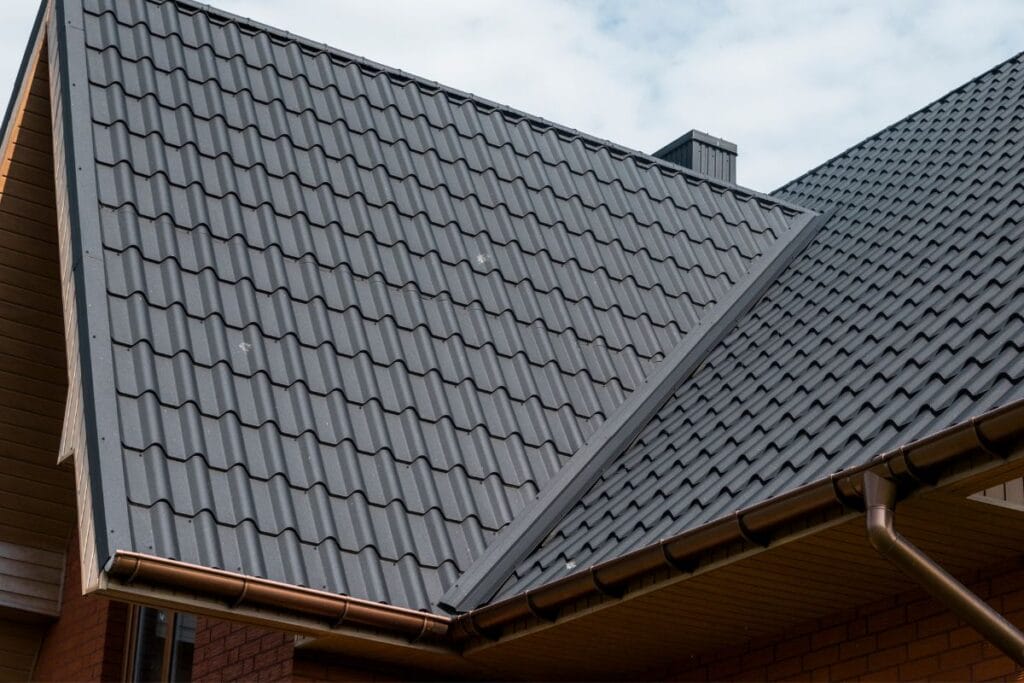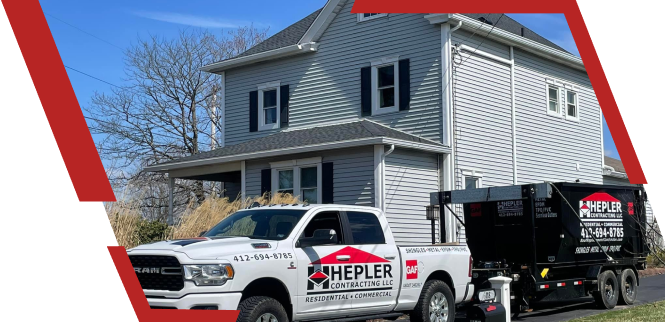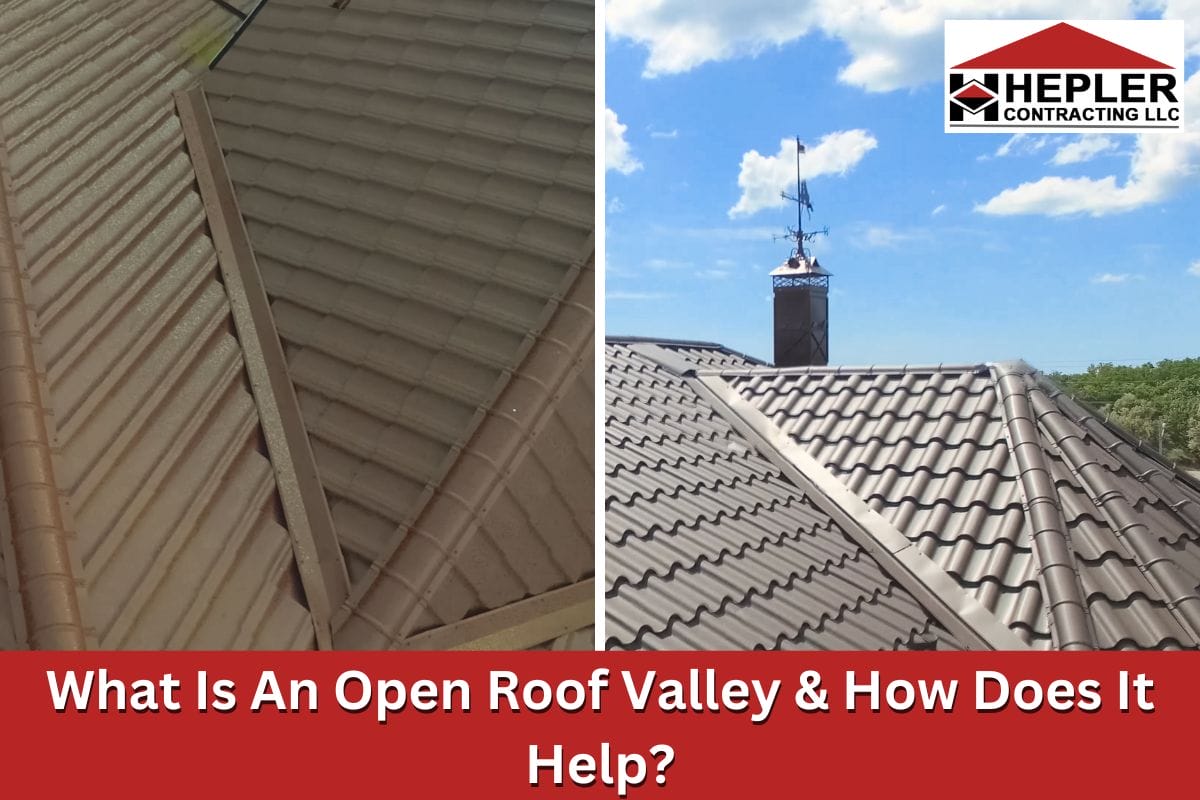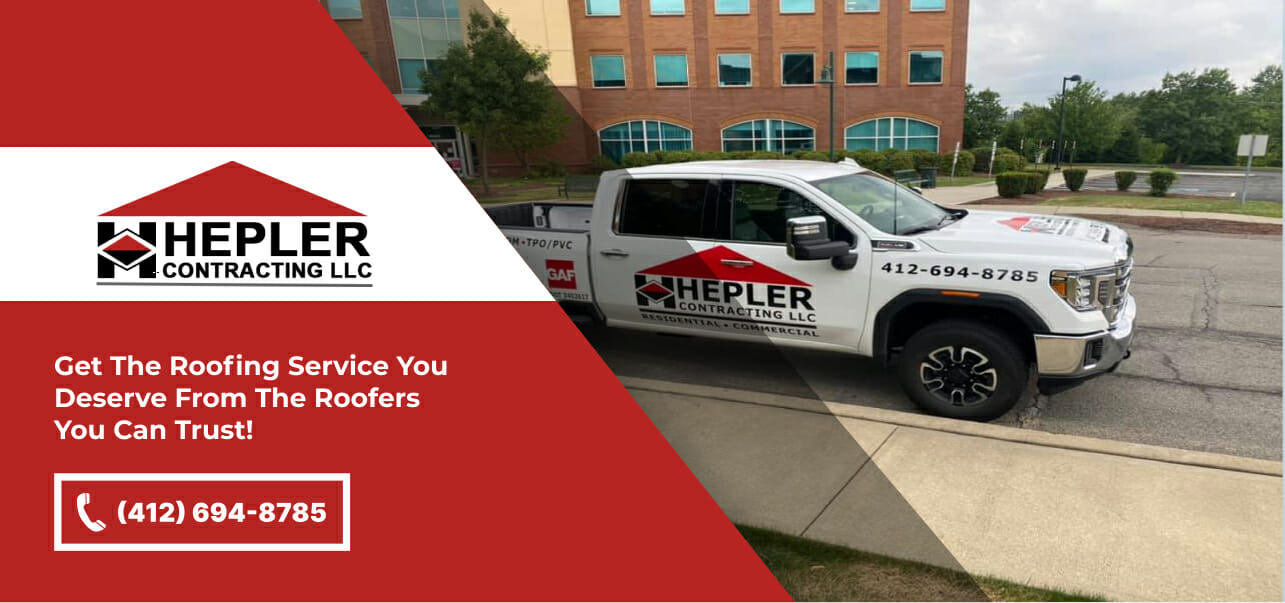The popularity of open roof valleys has been on the rise over the past couple of decades. Whether you’re a homeowner, roofing pro, or part of the construction and design industry, you should know what an open valley is and how it can benefit you.
At Hepler Contracting, we’re here with a detailed blog post on the topic to help you out. Our team is dedicated to sharing our expertise with homeowners and other professionals so that they can make better decisions for their roofing and exterior projects.
So, let’s get to know more about open valley roofs!
Closed vs. Open Roof Valleys
Traditionally, roof valleys were constructed using a closed method, where two adjoining roof slopes converge, forming a valley. In a closed roof valley design, roofing materials are placed across the valley and over the flashing, concealing it from view. Rainwater is then directed over the roofing materials and channeled down the valley, towards the gutters, and off the roof. This traditional approach had its own set of challenges, including ponding water, debris accumulation, and greater susceptibility to leaks and algae growth.
Today, open valleys represent a noteworthy departure from traditional closed valley systems. This is a modern roof valley design where the shingles do not cross over and cover the valley. Instead, a strip of metal flashing is placed over the valley where the two slopes meet.
The Benefits Of An Open Roof Valley

This remarkable design streamlines water drainage and minimizes debris accumulation, further enhancing the roof’s overall durability. Here are the advantages of this roof valley style:
Reduced Ice Dam Formation
In colder climates, ice dams can pose a significant problem on roofs. Open valleys help to prevent ice dams by allowing water to flow freely off the roof without obstruction. This can protect your roof from the damage caused by ice buildup.
Efficient Water Flow
Open roof valleys are designed to facilitate efficient water flow, ensuring that rainwater and snowmelt are quickly channeled away from the roof. This reduces the risk of water pooling and minimizes the potential for leaks.
Enhanced Roof Durability
As a roofing professional, I’ve seen how open roof valleys can significantly prolong the lifespan of a roof. The efficient water management and reduced risk of leaks ensure that the roof stays in excellent condition for many years.
Reduced Maintenance
For homeowners, an open roof valley means less time and money spent on maintenance. Without the constant need to clear debris or repair leaks, they can enjoy a hassle-free roofing experience.
Improved Aesthetics
Open valleys also contribute to the overall aesthetics of a home. The clean, unobstructed lines of the roof valley enhance the curb appeal, making the property more attractive to potential buyers.
Energy Efficiency
Proper water drainage through open roof valleys can also help with energy efficiency. By preventing water from seeping into the roof, the insulation remains dry and effective, contributing to a more energy-efficient home.
Remember, choosing the right material for roof valley flashing is vital to enjoying all these benefits for many years. Otherwise, you might face issues like leaks and flashing damage.
So, let’s explore different materials that are used to form roof valley flashing strips.
Flashing Materials For Open Valley Roofs
Metal flashing is the most common choice, but there are other options too. Here are some materials used to make roof valley flashing:
Metal Flashing

Metal flashing, typically made of materials like galvanized steel, aluminum, or copper, is a popular choice for forming open roof valleys. Metal flashing is durable and can effectively channel water away from the roof. Copper flashing, in particular, is known for its longevity and aesthetic appeal, as it develops a natural patina over time.
Ice and Water Shield
In areas prone to ice dams and heavy snow, an ice and water shield can be used as a flashing material. This self-adhering membrane provides an additional layer of protection against water infiltration, especially along vulnerable areas on the roof such as valleys.
Plastic or PVC Flashing
Some roofers use plastic or PVC-based roof flashing materials in open valleys. These materials are lightweight, easy to work with, and resistant to corrosion. They can be an economical choice for certain roofing projects.
For more information, you can read our previous blog post, where we’ve discussed roof valley flashing in detail.
It’s important to note that the choice of flashing material should be made in consultation with a qualified roofing professional. The selection depends on factors such as the roof’s design, local climate conditions, and budget considerations. The correct installation of the chosen flashing material is also crucial to ensure the effectiveness of the open roof valley in managing water and preventing leaks.
If you are looking to upgrade your roof with open valleys, our team of experts is here to help.
Discuss Roofing Possibilities With Pittsburgh’s Trusted Experts
At Hepler Contracting, we are always excited to guide and assist homeowners with building a safe, beautiful, and comfortable home. With our outstanding roofing services and a passionate team, we’re here to help you choose the best roof valley design for your home. If you are looking for a roof valley upgrade or a roof repair service in Pittsburgh, call us at (412) 694-8785. We will be happy to help you with a free consultation and estimate on your project. We are proud of our talented professionals who have made numerous customers happy, and we look forward to working with you too!
FAQ
A. Most roofing professionals will recommend having an open valley roof due to its multiple benefits. A closed valley is also a good option for areas where storms are not as frequent, and precipitation levels are low.
A. A closed cut roof valley is a type of closed roof valley where the shingles are cut along the valley intersection to create a straight finish. It’s a simple, traditional design that you can still spot on many roofs in the United States.


